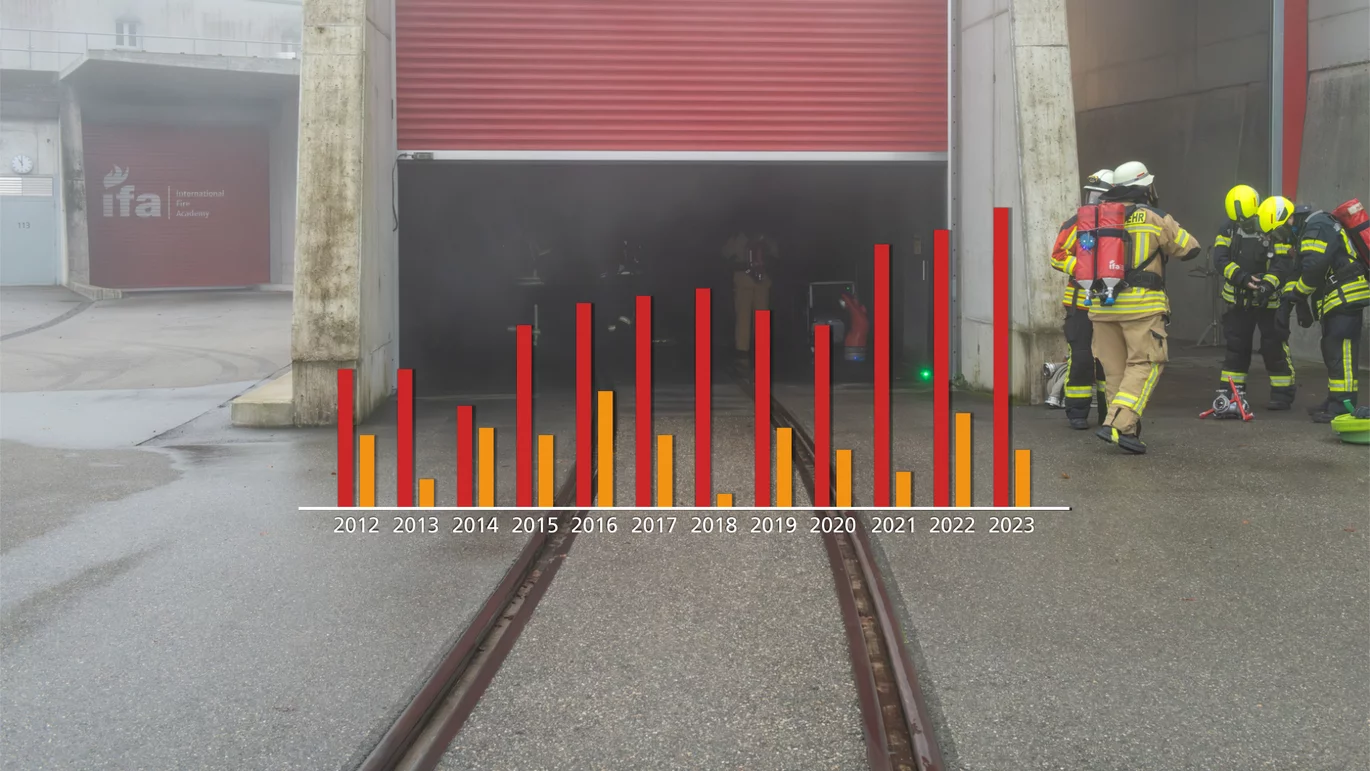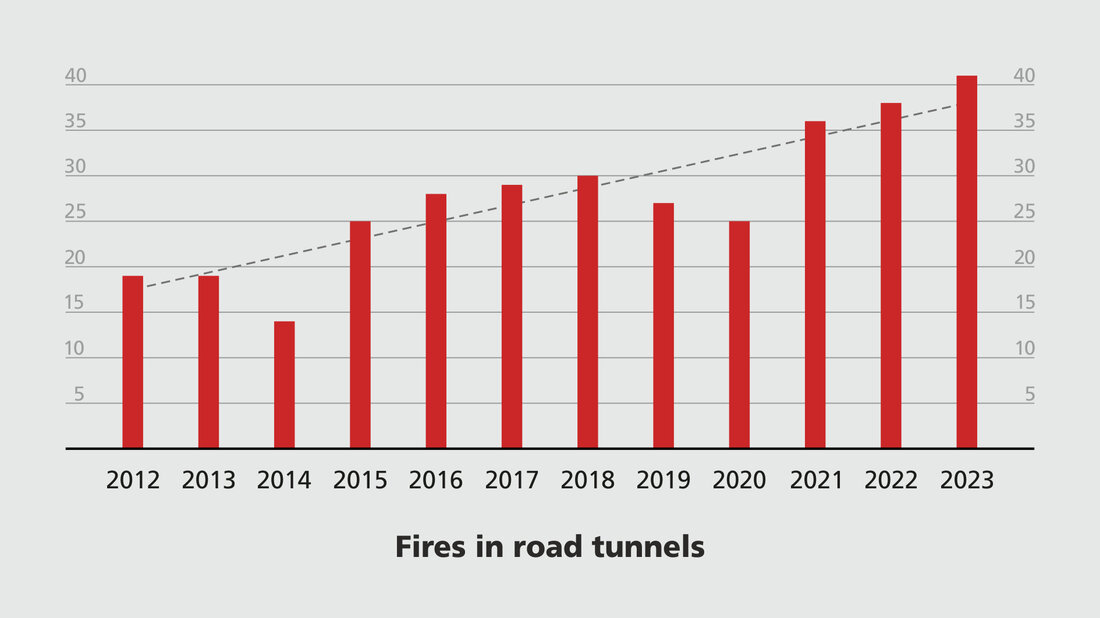There are no official statistics on fire incidents in underground transport systems. For this reason, the International Fire Academy has been analysing media reports on fire incidents in tunnels since the beginning of 2012. According to the report, there are at least three fires a month in railway or road tunnels in Switzerland, Austria and Germany alone.
Media reports from Switzerland, Germany and Austria
The International Fire Academy's tunnel fire statistics systematically records all German-language media reports on tunnel fires in Switzerland, Germany and Austria. Messages and incident reports provided to us by individual fire services are also included. All fire incidents are counted, as well as the isolated incidents in which fire services were called out due to unclear smoke development. Traffic accidents without fire and wilful or technical false alarms are not counted.
439 fire incidents in twelve years
According to the criteria mentioned, the International Fire Academy's statistics for 2012 to 2023 recorded 439 incidents. This corresponds to an average of three incidents per month. Around a quarter of all recorded fires occurred in railway tunnels (including suburban trains and underground trains), and around 75% in road tunnels.
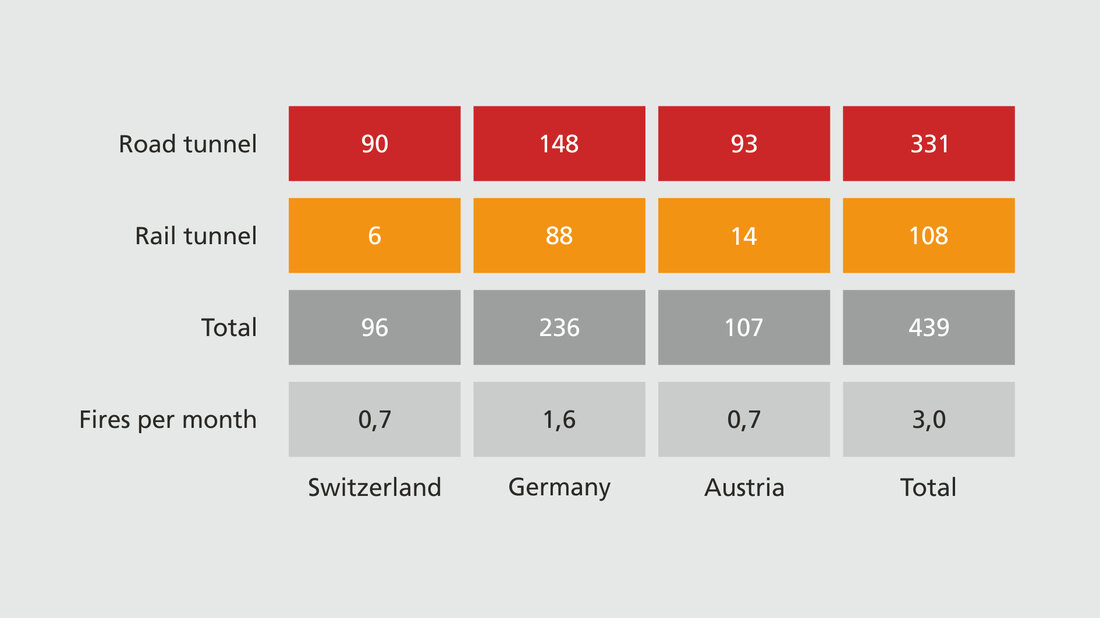
Different trends for railway and road tunnels
While the number of recorded incidents in the railway network tends to decrease slightly, with considerable fluctuations from year to year, the number of reported incidents in road tunnels shows a clear upward trend. However, as our statistics are only based on media reports due to a lack of officially recorded data, it is not possible to say for certain whether more incidents are actually occurring or are being reported more frequently.
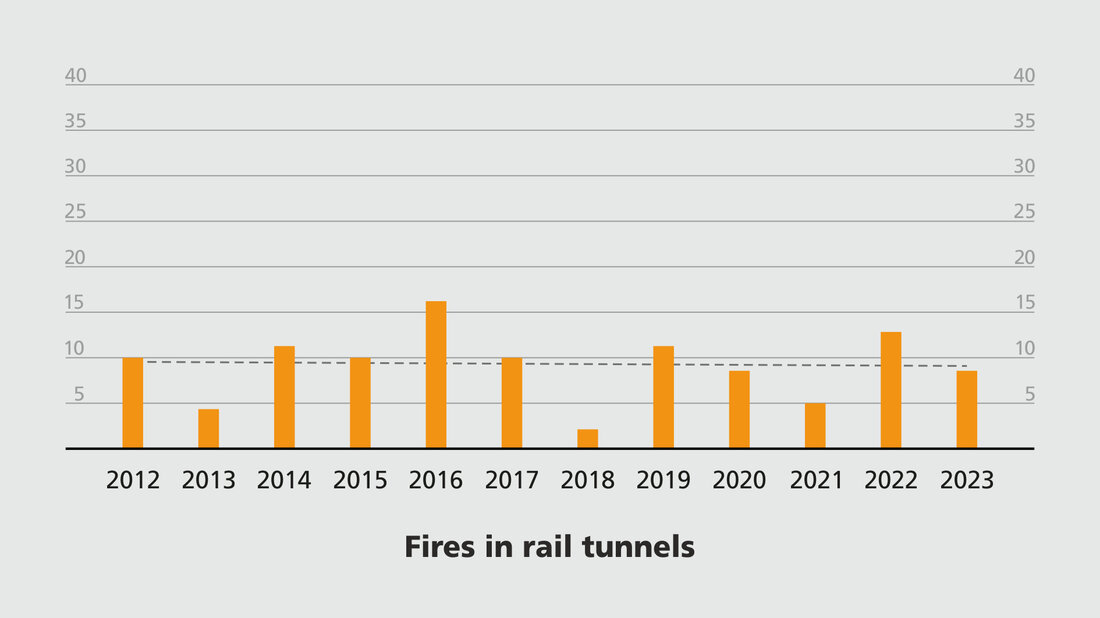
Nine fatalities in road tunnels
According to the analysed media reports, nine people died in vehicle fires in road tunnels between the beginning of 2012 and the end of 2023. In all cases, the vehicles were initially involved in severe accidents and the occupants were trapped before the fires broke out. We are not aware of any reports of people dying while trying to escape from a tunnel. There are also no reports of fatalities in train fires in railway tunnels in Switzerland, Germany and Austria for the survey period.
183 people were injured, primarily due to smoke
The majority of the 183 people who were injured in the recorded incidents suffered from smoke inhalation injuries. According to the media, 66 people were injured by fires in railway tunnels. In the Terfen tunnel fire in Tyrol (A) on 7 June 2023 alone, 33 people suffered smoke inhalation injuries.
Eleven were injured in the Bürgerwald tunnel fire
According to our media analysis, most injuries in road tunnels were caused by a passenger car fire in the Bürgerwald tunnel in Waldshut-Tiengen (Germany) on 1 June 2020. Ten self-rescuers had to be taken to neighbouring hospitals with smoke inhalation injuries, one person to a specialist clinic. Read about the details in the incident report by fire chief Peter Wolf in our magazine.
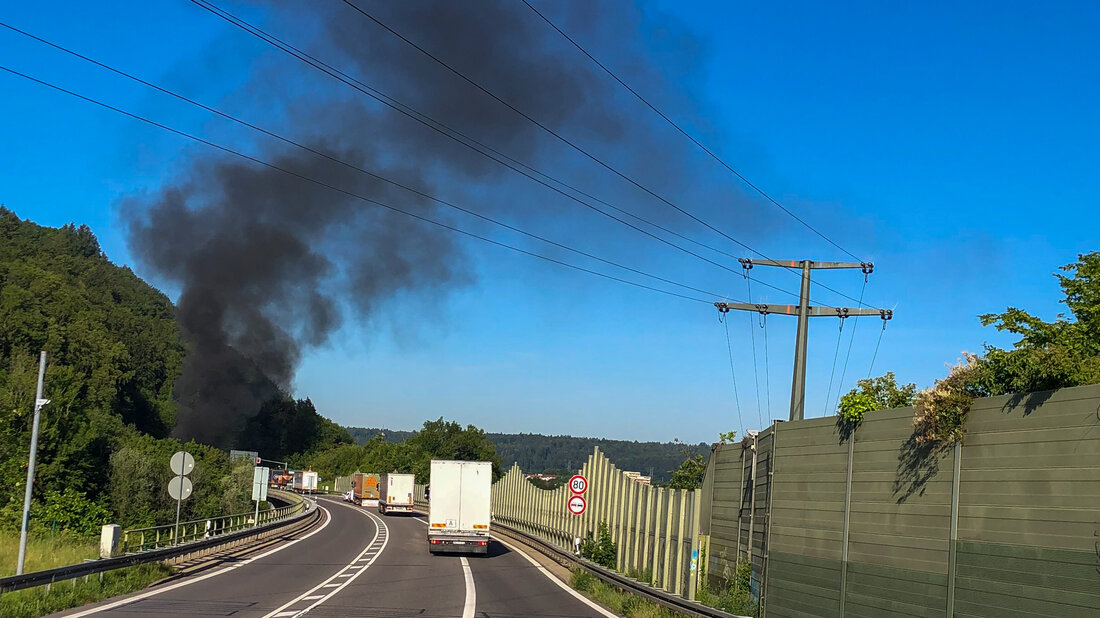
Incidents in tunnels due to fires outside of tunnels
According to several reports on road tunnels, the tubes were considerably filled with smoke in 66 incidents, but the fire occurred at least temporarily outside the tunnels. On the one hand, these are the 57 reported cases in which the drivers just managed to stop their burning vehicle immediately before entering the tunnel or, on the other hand, managed to exit the tunnel before having to stop. In eleven fire incidents, smoke from other burning objects (buildings, vegetation) entered a road tunnel. We have also counted such incidents as tunnel fires because they can lead to extremely critical situations in a tunnel.
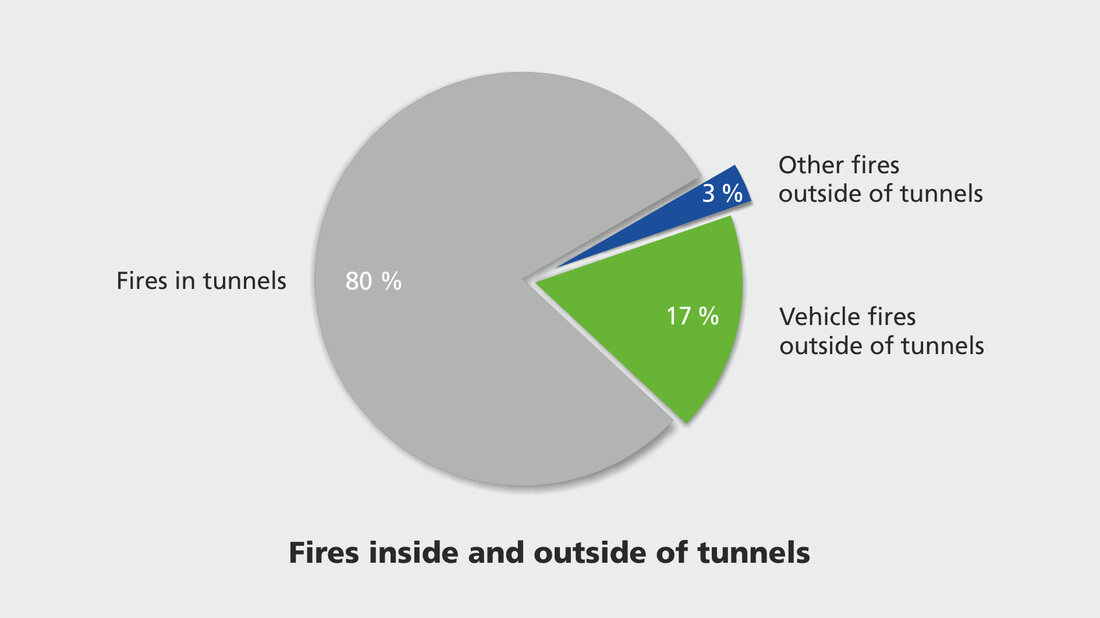
Only a few cases of buildings at risk in the vicinity
There are few reports of the reverse case, i.e., smoke from a tunnel endangering surrounding objects, such as the fire involving an ICE train in the underground station at Cologne/Bonn Airport on 10 November 2022. The smoke spread across the airport grounds at this incident and penetrated into car parks. You'll also find a incident report on this case in our magazine.
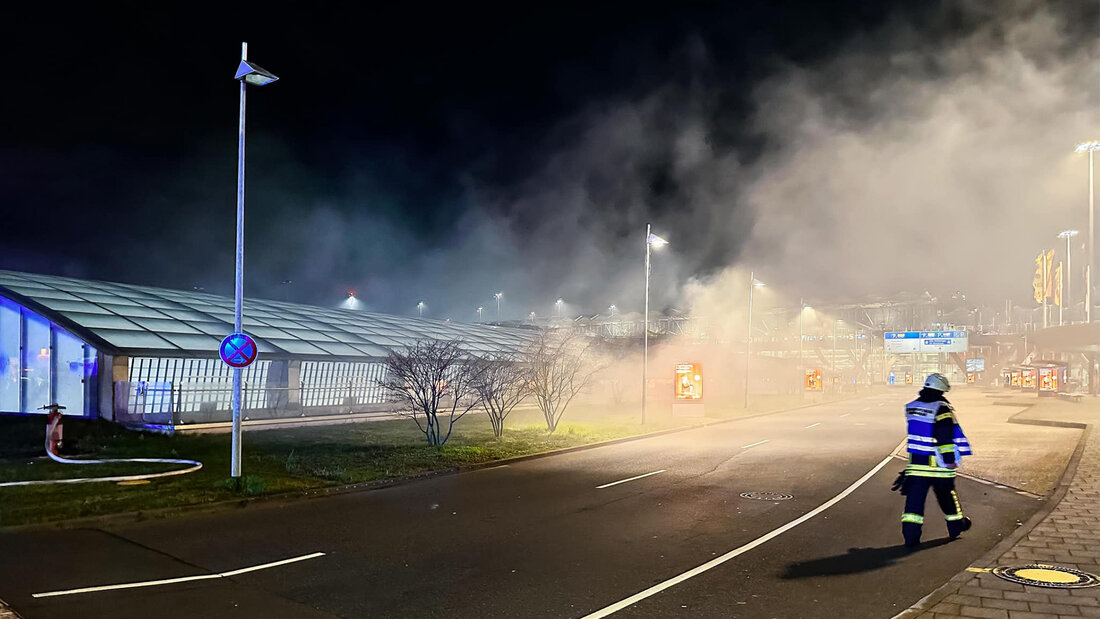
Different sources of fire in railway and road tunnels
Around 90% of fires in road tunnels were vehicle fires; fires in electrical installations, for example, were rarely mentioned. The frequency distribution of the recorded incidents is shown in the diagram below.
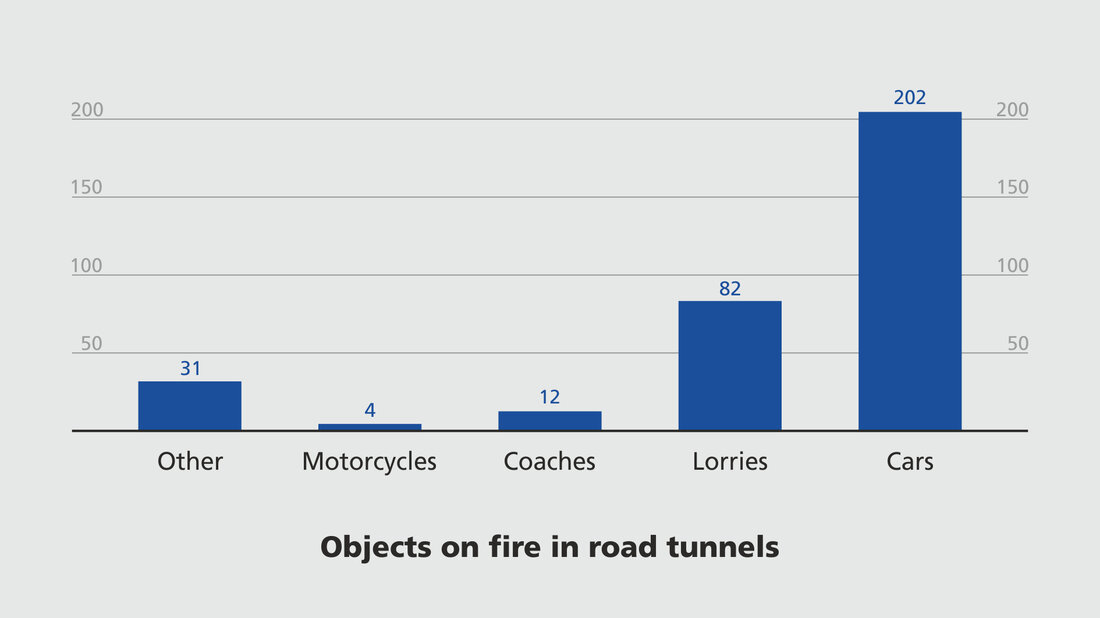
Burning vehicles are the minority in railway tunnels
The picture for railway tunnels is different: In only 22 per cent of the recorded cases, rail vehicles or parts thereof, such as condensers or brakes, were on fire. Concluding that 24 incidents were train fires. In all other cases, objects such as switch cabinets, electrical cables, rubbish, wooden railway sleepers and walkways, luggage or neighbouring buildings from which the smoke drifted into the underground facilities were on fire. In six cases, construction machinery burned at tunnel construction sites.
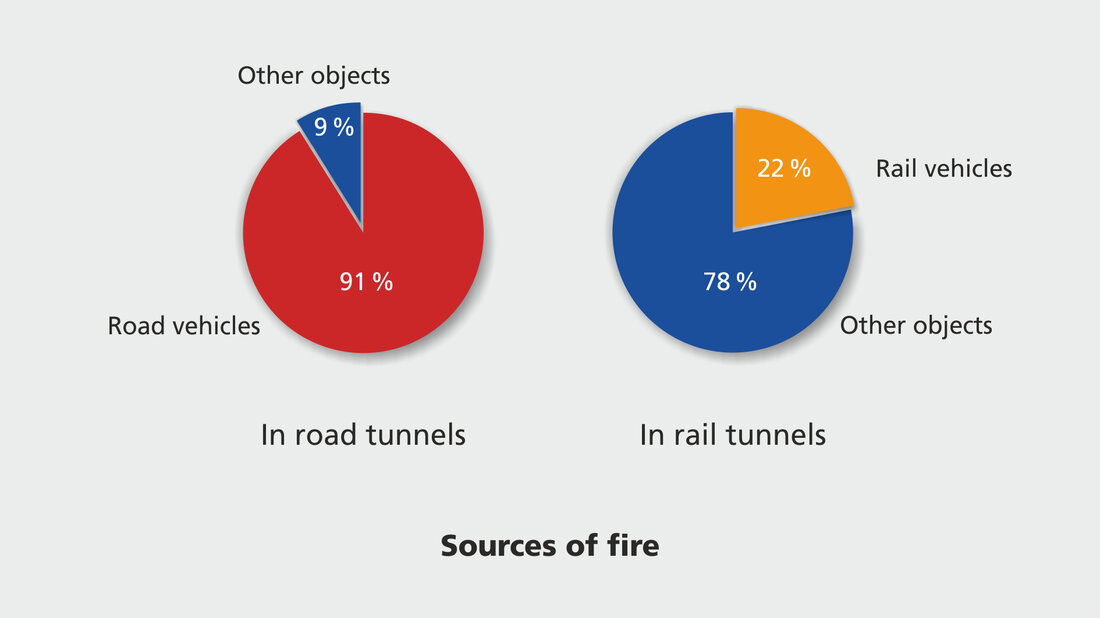
Critical smoke production is possible even with small fires
An example from Berlin, reported by the German press agency dpa, shows that even small fires in tunnels can lead to major operations: On 30 September 2022, a small amount of insulating material caught fire in the Seestrasse underground station. The Berlin fire service deployed around 90 firefighters to rescue three people from smoke-filled areas, extinguish the fire and clear the underground railway facilities of smoke.
More hazards in suburban and underground trains
The wide range of possible fire sources also explains why most fires in the railway sector (60 %) occurred in suburban trains or underground trains: With their widely branching tube systems, many stations and stops as well as electrical installations, these offer many more sources of danger than, for example, tunnels on long-distance railway lines.
Conclusions from the analysis
As the statistics of the International Fire Academy have so far been based mainly on media reports and an unknown number of incidents are therefore not recorded, great caution is required when interpreting the data. Based on the analysed reports, we come to the following conclusions:
- Although fires in tunnels are rare compared to other fire incidents, 439 recorded incidents in twelve years show that the effort required to prepare for tunnel operations is justified given the possible extent and consequences.
- In road tunnels, it is mainly road vehicles that burn, whereas in railway tunnels, it is mainly tunnel infrastructure assets such as control cabinets that burn.
- Fires outside tunnels can also lead to critical situations if the smoke enters an underground transport system.
- According to media reports, tunnel fires in Switzerland, Germany and Austria claimed nine lives between 2012 and 2023. In comparison, from 1999 to 2006, 71 people lost their lives in the fires in the Mont Blanc, Tauern, Gotthard and Via Mala road tunnels alone.
The International Fire Academy will continue to update the statistics consistently. We are also happy to record incident reports directly from fire services. We would therefore be pleased if you would contact us by e-mail with a note about your tunnel incident: forum(at)ifa-swiss.ch. We will then get in touch with you.


